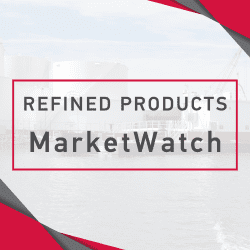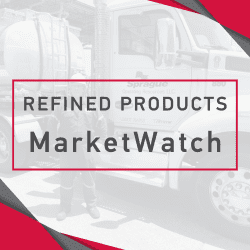Recap: Oil prices climbed more than 1% after the release of the EIA report, which showed a decline of 6.1 million barrels in U.S. crude oil inventories. Expectations were calling for a decrease of 2.3 million barrels. September WTI rose to a high of $69.70 a barrel, its highest level in over a week, while September Brent topped the session at $73.44 a barrel. Gains were limited due to the fact that the bulk of the draw occurred in PADD 5. Although prices trickled from the highs of the day, WTI remained above $69.00 a barrel, finishing above this level for the first time in almost 2 weeks. September WTI settled at $69.30 a barrel, up 78 cents, or 1.1%, while Brent for September delivery tacked on 49 cents, or 0.7%, to settle at $73.93 a barrel.
September RBOB rose 2.64 cents, to settle at $2.0851 a gallon, while September heating oil finished up 1.81 cents, settling at $2.156 a gallon.
Fundamental News: The IEA’s Energy Markets Director, Keisuke Sadamori, said US efforts to reduce Iran’s oil exports are expected to contribute to global oil price volatility in the short-term.
South Korea’s Hyundai Oilbank predicts higher short-term volatility in crude prices during the three months to September. Volatility is expected to increase as OPEC increases its output, the US-China trade dispute persists and Libya’s supply disruptions ease.
According to the Tasnim news agency, the head of the Revolutionary Guards said America’s oil threats against Iran can be easily answered.
Bloomberg reported that Saudi Arabia is shipping US crude pumped from the Gulf of Mexico to Asia at a time when China is cutting US cargoes. The trading unit of Saudi Aramco is said to have sold about 1 million barrels of US Mars crude to Taiwan’s Formosa Petrochemical for delivery in September-October. This follows shipments of oil produced at shale fields to markets such as the UAE and South Korea as Saudi Arabia seeks to capitalize on increasing US output that has threatened the market share of its own supply in Asia.
Russia’s Energy Minister, Alexander Novak, said the country’s oil production is expected to increase this year to 551 million tons or 11.02 million bpd, a new 30-year high and up by 3.5 million tons from previous expectations. He said Russia would increase its oil production to 555 million tons in 2019.
A field engineer said a control station at Libya’s Sharara oilfield has resumed operation but foreign engineers who help operate the field have not returned yet due to security reasons. Station 186 was shut down after two oilfield staff were abducted in an attack by an unknown group more than a week ago, forcing Libya’s National Oil Corp to cut production. There was no current production figure available but the engineer said that with the station coming back, output would increase again.
IIR Energy reported that US oil refiners are expected to shut in 462,000 bpd of capacity in the week ending July 27th, increasing available refining capacity by 411,000 bpd from the previous week. IIR expects offline capacity to fall to 296,000 bpd in the week ending August 3rd.
About 1.5 million tons of diesel are expected to flow to the US Gulf Coast to Europe in July, with most of the volumes being absorbed in the Mediterranean market. Meanwhile, gasoline exports to North America increased sharply in recent days and are now expected to reach about 1.3 million tons in July.
Early Market Call – as of 8:20 AM EDT
WTI – Sep $69.25, down 5 cents
RBOB – Aug $2.1271, up 38 points
HO – Aug $2.1598, up 92 points
View the Sprague Refined Products Market Watch Report in a downloadable pdf format by clicking below.
Click to view more online:
View market updates
View our refined products glossary
Go to SpraguePORT online









